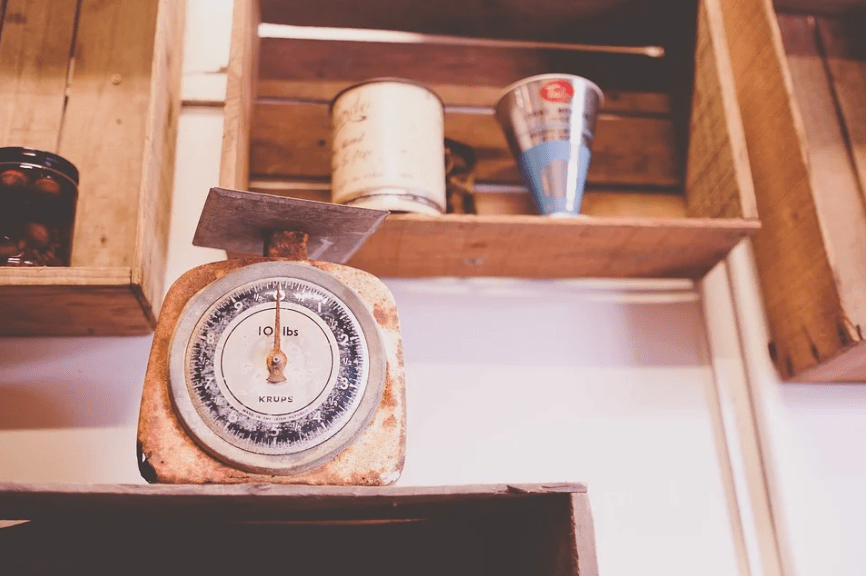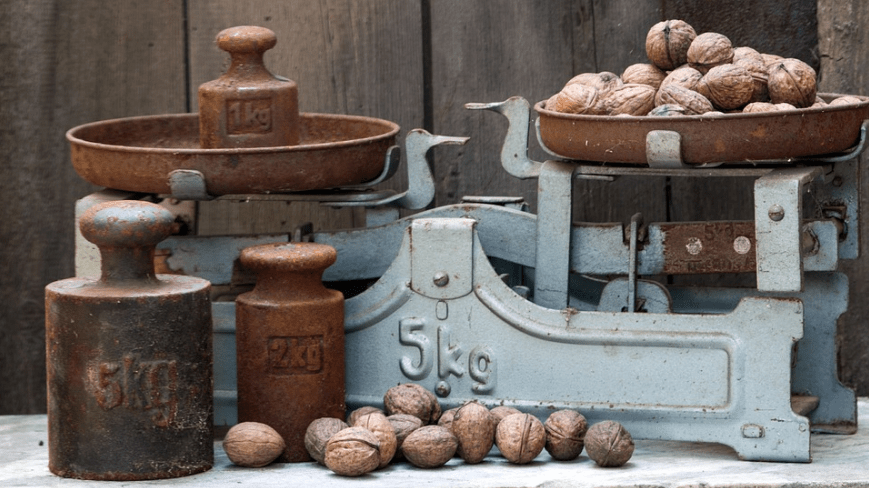In cooking, you would often need to accurately measure how much of the ingredients you need to put in a specific dish, as a miscalculation in measurement could lead to a disastrous dish that may not taste well. So, in order to measure the ingredients you would need for cooking, you should have a weight scale in your kitchen.
A weight scale is a device that will let you measure items by kilos or by grams, depending on the unit of measurement shown on the scale’s screen. Now, there are different types of weight scales that you can buy, and each type offers its own pros and cons. To help you decide on which type of weight scale is perfect for your kitchen, here is a list of all popular types of weight scales and a brief description of each of them.
Mechanical Scale
The mechanical scale, also known as the spring scale, is arguably the most common type of scale today, as it has simple weighing mechanics that make it cheaper than any other types of weight scale. The mechanical scale uses a spring to measure the weight of a specific object placed on the bowl that is on top of the spring. When the spring is compressed, it will then move the needle on the screen that will tell you the weight of the item.
Because the mechanical scale is inexpensive, it would often be made of sub-par materials, thus preventing you from getting precise measurements. If you plan to buy a mechanical scale, make sure that you purchase the best one that is made with high-quality materials, which can be more expensive than most mechanical scales.
Digital Scale
If you want a more accurate measurement for smaller ingredients or items, then you should get the high-tech and modern digital scale, which relies on computer-generated measurements and not springs. In addition, some digital scales also offer you to choose from different units of measurement, unlike mechanical scales that are typically only stuck to one.
There are also a few digital scales that save the measurements of your ingredients if ever you need to see them again, and this feature is quite convenient if you are following recipes online or in a cookbook. Unfortunately, the one downside to digital scales is that they would require power to work, so you may need to put batteries on them or plug them in an electrical outlet. But, as long as you provide it with power every time you use it, the digital scale is arguably the best option for your kitchen.
Hanging Scale
The hanging scale, as its name suggests, is the type of weight scale that is hung on a ceiling or a platform and has a hook at the bottom that the ingredients on a large bowl will pull via chains. So, instead of pushing down the spring, like in regular mechanical scales, it should be pulled in a hanging scale to get measurements. The hanging scale is the most portable out of all types of scales, as it doesn’t really have a bulky stand, and the actual device can actually be carried using only one hand.
The drawback to the hanging scale is that it also doesn’t measure accurately since it relies on the pull of the object or ingredient, and the amount of pull would often depend on where the object is placed on the bowl. But, there are digital hanging scales as well, and these devices can give you much more accurate measurement, although not as precise as a standard digital scale.
Balance Scale
The balance scale is one of the oldest types of weight scales used for cooking, but it is still being used today because of how durable it is compared to the others. This type of scale doesn’t have a screen to tell you the measurement of an object or ingredient, but what you will need to do to measure the item is to compare its weight to another item that already has a set weight to it.
The item with the set weight usually comes in the form of a block, and this block will also be accompanied by other blocks that are either smaller or bigger than it. These blocks would have a weight indicated on each of them, so one block may weigh 1 kilogram while another may weigh 2 kilograms. You will then place one or more blocks on the left bowl of the balance scale, and then you will put the item to be measured on the right bowl. If both of the bowls are at the same height, then that means that the item measured has the same weight as the block/s on the left bowl. For example, if you place a 1-kilo block on the left bowl and place an item on the right bowl, and then both bowls are at the same height, it means that the item weighs 1 kilogram.
However, because it relies on comparison, the balance scale may not give you precise measurements, especially if the bowls really cannot be on the same height when measuring. So, it would be better to use a mechanical scale instead if you want to count even the smallest grams for the total weight of the item you are going to measure.
It is great to invest in a high-quality weight scale for your kitchen, as it would allow you to take accurate measurements of the ingredients needed for cooking your favorite dishes or experimental delicacies. With a good weight scale, you wouldn’t have to struggle following recipes anymore since you will now have a way to measure ingredients on the fly.



